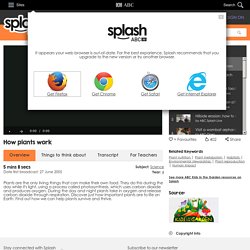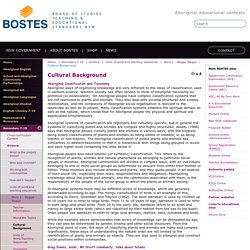

Gotta Eat! - Crash Course Kids 1.1. Living Things. Teacher's notes Science 3. Is It Alive? Living and Non-Living. What is the definition of living things? Asta 3 2 1 bi non living yr3 4 v1 2. What are some of the differences between living things and non living things? Living and Nonliving Things Quiz - Turtle Diary. How plants work: ABC online education. 00:00:19:06NICK HARDCASTLE:Mmm!

(Sniffs) Hmm... Eugh. Ah.00:00:36:08VOICE:Yummy! 00:00:37:20NICK HARDCASTLE:One of the most distinctive things about our planet is that it's so green. Green equals plants, plants equals life. Plant leaves: ABC online education. The many uses of indigenous plants (relationships between plant and animal): ABC online education. 00:00:00:00Text on screen - 'Viewer Advice.

Aboriginal and Torres Strait Islander viewers are advised that the following media resource may contain images and voices of people who have died.' A group of Indigenous people distribute and plant native plants in Australian coastal bushland. Text on screen - 'The Towra Team. Clarence Slockee.'00:00:16:19CLARENCE SLOCKEE:These young people are called the Towra Team. Cultural Background: Aboriginal classification and taxonomy. Aboriginal Classification and Taxonomy Aboriginal ways of organising knowledge are very different to the ideas of classification used in western science.

Western society has often tended to think of Aboriginal taxonomy as primitive (or nonexistent). Yet Aboriginal people have complex classification systems that are not restricted to plants and animals. They also deal with societal structures and kinship relationships, and the complexity of Aboriginal social organisation is relevant to the landscape as well as to people.